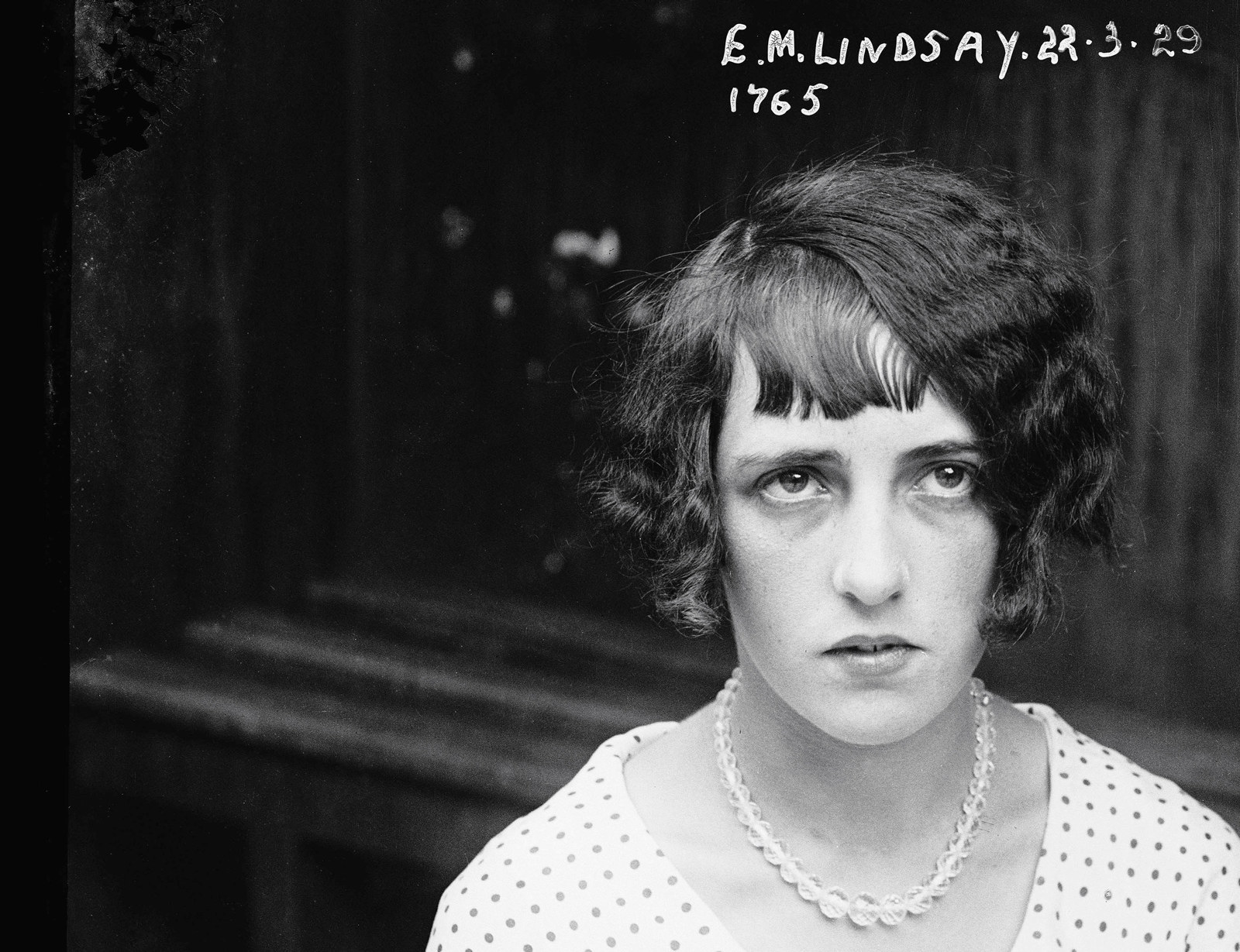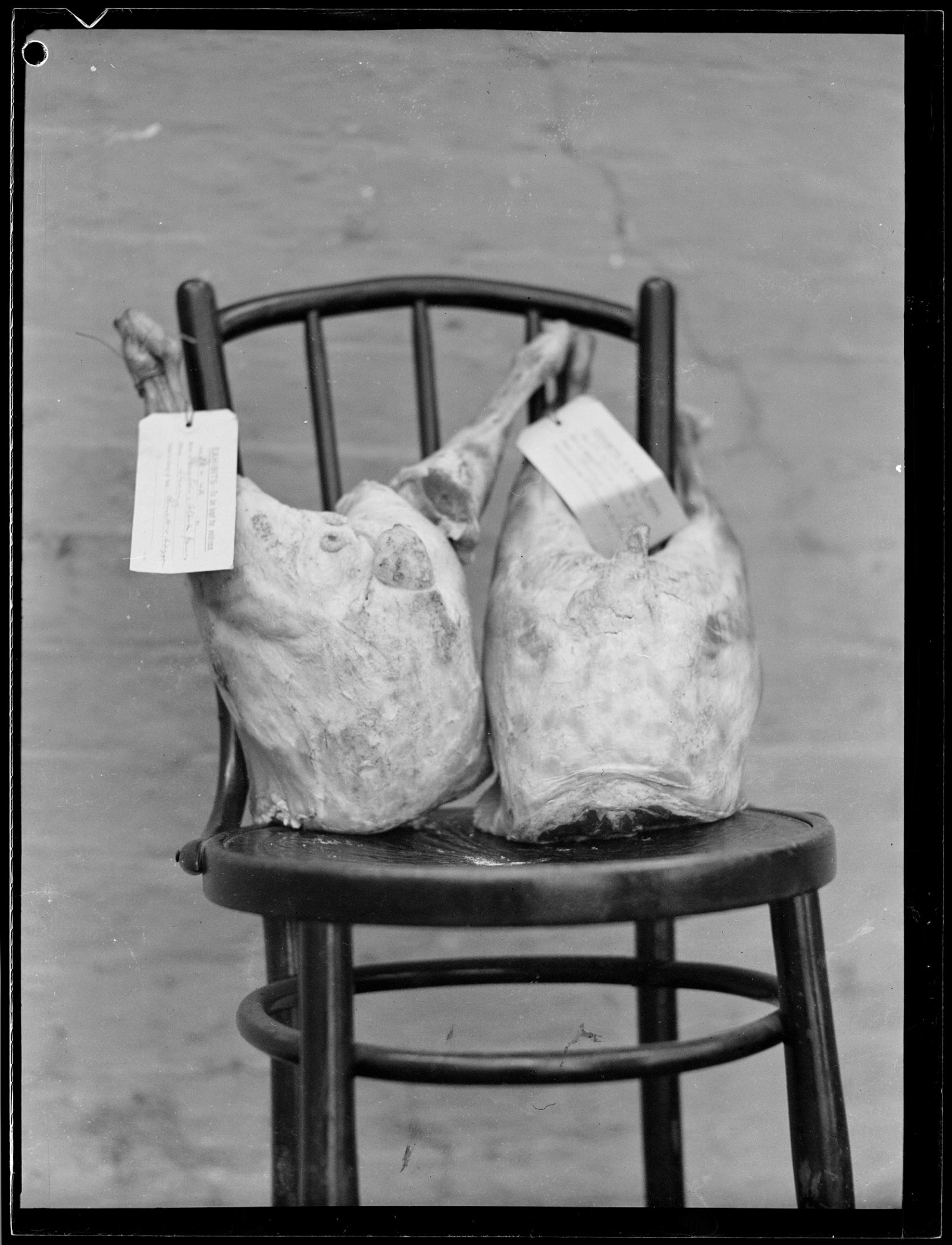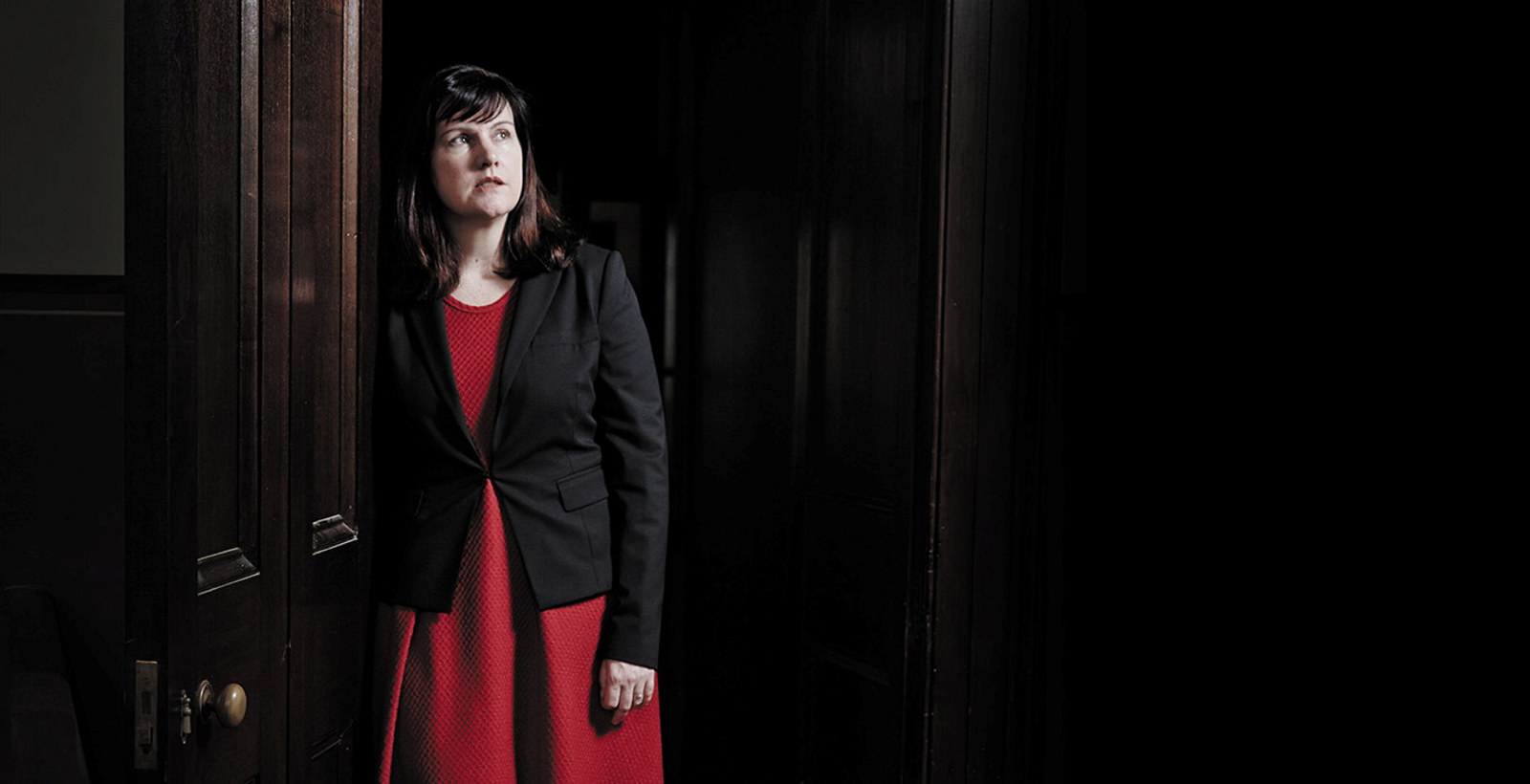Sydney’s first Zoot Suiter
It’s amazing the characters you come across when researching the NSW Police Forensic Archive.
While looking further into the story of Neville McQuade, who cropped up in a North Sydney Police Station mug shot from 1942, I came across an intriguing reference to George Pavlos Kiouzelis, the ‘youth of zoot-suit fame.’1
In 1943, 16 year old Kiouzelis (often spelt Kiouzeois or Kiouzelas by the media at the time) was brought to the attention of the authorities for reportedly dancing at Sydney’s Trocadero dance hall in a ‘zoot suit’. Zoot suits were a suit style popular in the USA in the 1940s, distinctive for their wide legged, loose trousers with pegged cuffs and long, oversized jackets with wide lapels. According to Rockhampton’s Morning Bulletin (the suit was national news):
His coat was of green-checked tweed, 26 inches long to the knee, and his trousers of only 16 inch width at the bottoms, clung to his ankles above suede shoes. 2
Kiouzelis’ suit was a problem to Mr Ifould, Deputy Director of War Organisation of Industry, as its excessive use of material infringed wartime clothing restrictions. Upon receiving numerous letters about Kiouzelis’ distinctive outfit (and it was surely seen by many, as Kiouzelis went jitterbugging at the Trocadero dance hall every night and claimed to be dancing with 200 girls a week), Mr Ifould had demanded the young man come and visit him at 10am on a Wednesday. Kiouzelis arrived around noon, explaining that as he went out dancing every night, it was difficult for him to rise before 10.
Mr Ifould turned Kiouzelis over to manpower authorities3, who forced the teenager to give up his casual work as a waiter and take up a full-time, night-shift position in heavy industry, working at Rheem Manufacturing Co. in Waterloo (alongside Neville McQuade). Mr. Ifould stated that he would investigate the possibility of prosecuting the tailor who made the infringing suit - a recently arrived Greek migrant with little English speaking ability.
The Trocadero, 1936. The Trocadero, a dance hall on George Street, Sydney, was popular with ‘jitterbugs’ in the late 30s and early 1940s – young dancers enamoured with swing dancing styles such as the jitterbug, the Lindy Hop, and the Jive. Image courtesy State Library NSW.
But Kiouzelis’ new job in heavy industry didn’t cramp his style. Perth’s Sunday Times, who had labelled Kiouzelis an ‘Irrepressible Jitterbug’, reported Kiouzelis as saying ‘“Next week… I do night work in my new job, but the following week I’ll be on day work, and then, boy, will I pound the leather! You know what that means if you’re hep to the jive and not too old.’4
Washington, D.C. Soldier inspecting a couple of "zoot suits" at the Uline Arena during Woody Herman's Orchestra engagement there, June 1942. Photographer: John Ferrell. Image courtesy Library of Congress, USA.
Kiouzelis received the title of ‘Sydney’s first Zoot Suiter’ and his story spread across the country.
In the early 1940s, tensions in the USA between servicemen and Mexican-Americans had reached fever-pitch. Many servicemen disliked zoot suits, favoured at the time by the Mexican and African-American population, viewing them as unpatriotic for their excessive use of material in wartime. ‘Zoot suit riots’ broke out across Los Angeles and many young men and women were injured. The violence and rioting reached a point where anyone wearing a zoot suit was putting themselves in danger. In June 1943 Los Angeles City Council banned the wearing of zoot suits – imprisonment for 30 days being the punishment for anyone found wearing ‘ankle-choker pants and knee-length coats.’5 This move was mostly for the protection of zoot-suiters, many of whom sought protective arrest.
The actions of Mr Ifould and the War Organisation of Industry may seem harsh to us now –forcing a fashion-conscious, dance-obsessed young man to change his job and give up his prized suit– and potentially his favourite hobby. However, given the concerns internationally at the time about the inflammatory nature of the zoot suit, it is hardly surprising the Kiouzelis’ outfit aroused the interest of Australian authorities, who were quick to act.
I hope that, after the conclusion of World War Two and the restoration of freedom of employment, young George Kiouzelis was able to return to his dancing habit with vigour, carving up the floors of the Trocadero for many years to come.
Footnotes
1. The Daily News, Perth, Friday 17 September 1943, p 2
2. Morning Bulletin, Rockhampton, Wednesday 15 September 1943, p 6
3. The Manpower Authority were an Australian government department during World War 2, who had the power to direct any person to leave one employment and engage in another, restrict the right of employees to engage in the employment of their choice and prevent employees from leaving their employment. It was the aim of the Manpower Authority to ensure maximum manpower for the war effort. Australian War Memorial Website
4. Sunday Times, Perth, Sunday 12 September 1943, p 9
5. The Sydney Morning Herald, Friday 11 June 1943, p 6
Published on
More stories
Browse all
Underworld
Flappers
The flapper was an alluring vision of sophistication and freedom for young women globally

Underworld
The Roaring Twenties
The 1920s heralded the brave new world that emerged from the devastation of World War I

A Christmas crime
As Christmas approached, the Magistrates at the Water Police Court, now the Justice & Police Museum, were often faced with a very seasonal crime – the theft of Christmas hams

A life in crime
Curator Nerida Campbell has got the dream job – rummaging through the grit and grime of Sydney’s criminal past to help us to come to terms with the city’s dark side
